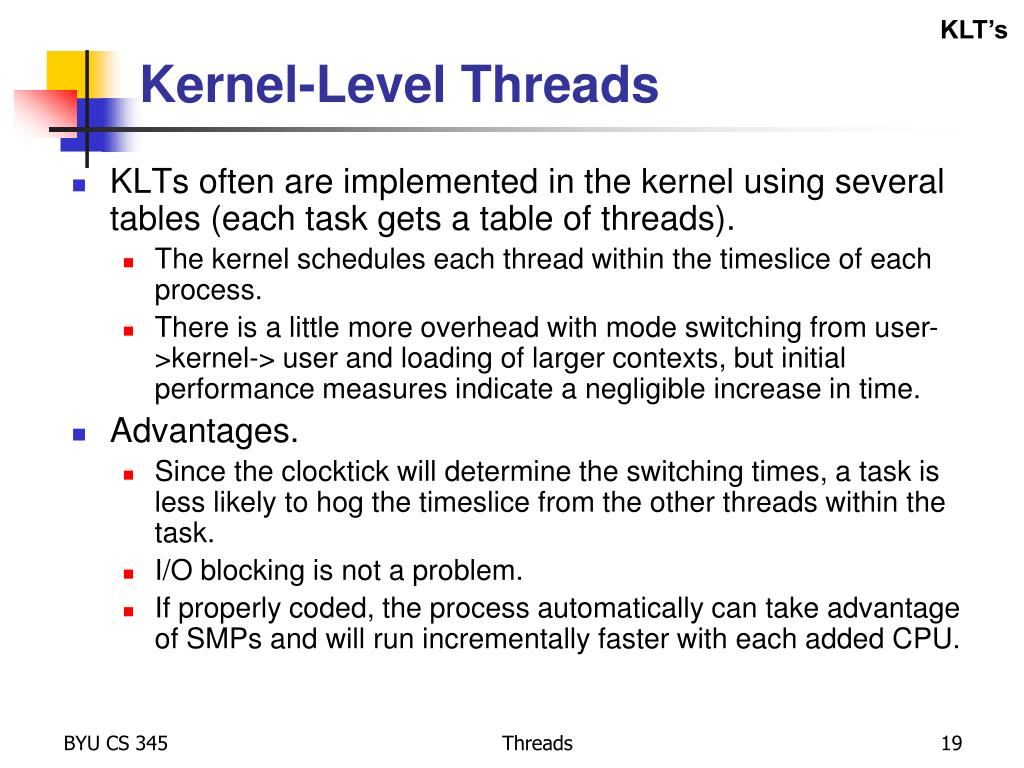

The time allocated to processing each thread is determined by the CPU scheduler. Multi-tasking Operating Systems switch from task to task using various algorithms and heuristics giving the impression that they are multi-tasking whereas they are really processing each thread in turn.
#Kernel retrieve timeslice used 32 bit
In a Windows 2003 32 bit environment processor scheduling can be optimised either for Programs or Background Services.
#Kernel retrieve timeslice used 64 Bit
In a 64 bit environment the above limits have been increased and while the LargeSystemCache entry still exists in the registry its use has been deprecated. In a 32 bit Citrix Presentation Server environment it is recommended that memory is optimised for Applications over System Cache to ensure that the maximum amount of RAM is available for kernel operations. Reducing either of these in a Citrix environment may lead to increased paging and poorer performance. Similar limitations exist for system page table entries. In a 32 bit environment paged pool memory is limited to a maximum of approximately 650MB however much physical RAM is installed on the server. The LargeSystemCache is allocated from kernel memory area, which is shared with the paged pool memory and system page table entries. This setting is recommended for most computers running Windows Server 2003 on large networks. The system allows changed pages to remain in physical memory until the number of available pages drops to approximately 250. This setting is recommended for servers running applications that do their own memory caching, such as Microsoft SQL Server, and for applications that perform best with ample memory, such as Internet Information Services (IIS).Įstablishes a large system cache working set that can expand to physical memory, minus 4 MB, if needed. The system allows changed pages to remain in physical memory until the number of available pages drops to approximately 1,000. There are two possible values for this key which are: ValueĮstablishes a standard size file-system cache of approximately 8 MB. The value set for this key can be viewed in the server GUI by accessing the performance settings on the advanced tab of the system properties careen.

Similarly, writing system data less frequently minimizes use of the disk subsystem, but the changed pages occupy memory that might otherwise be used by applications. Increasing the size of the file system cache generally improves server performance, but it reduces the physical memory space available to applications and services. The LargeSystemCache registry value ( found ain the registry at HKLMSYSTEMCurrentControlSetControlSession ManagerMemory Management) specifies whether the system maintains a standard size or a large size file system cache, and influences how often the system writes changed pages to disk. In a Windows 2003 32 bit environment server memory can be optimised either for System Cache or for Programs.

* 'sched.c' is the main kernel file.Following my earlier post ( ) I have done some digging and, thanks to the hard work done by Jeremy at J House Consulting and the advice he gives ( ), I can give what I think is a correct explanation of why the RAM and CPU are optimized in the way they are in the majority of XenApp deployment.

* Modified by Ulrich Windl to make NTP work * Copyright (C) 1991, 1992 Linus Torvalds


 0 kommentar(er)
0 kommentar(er)
